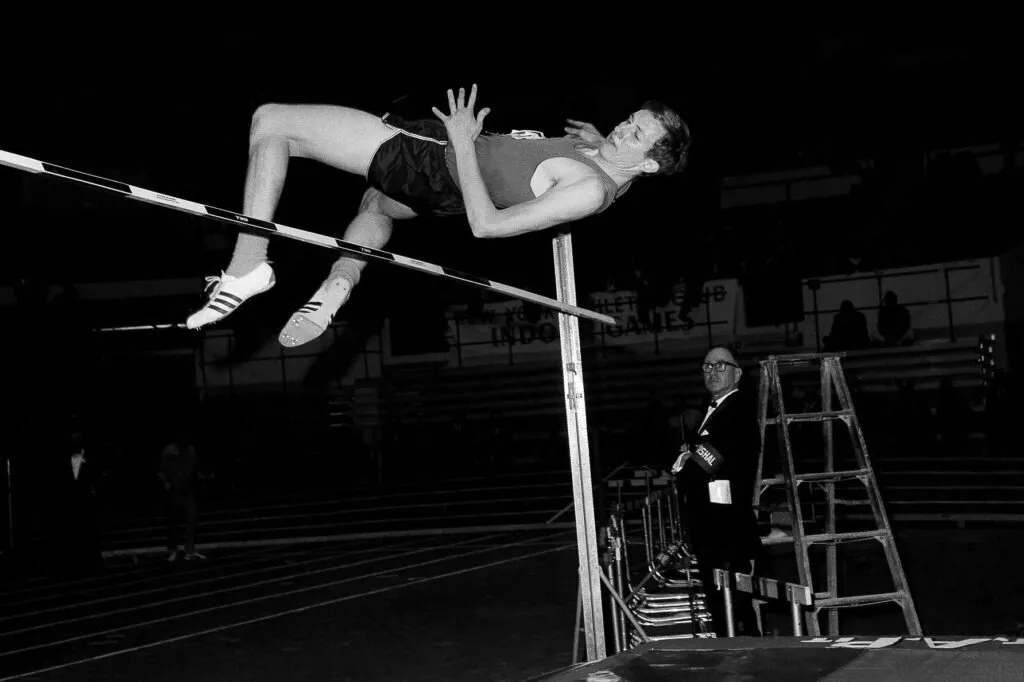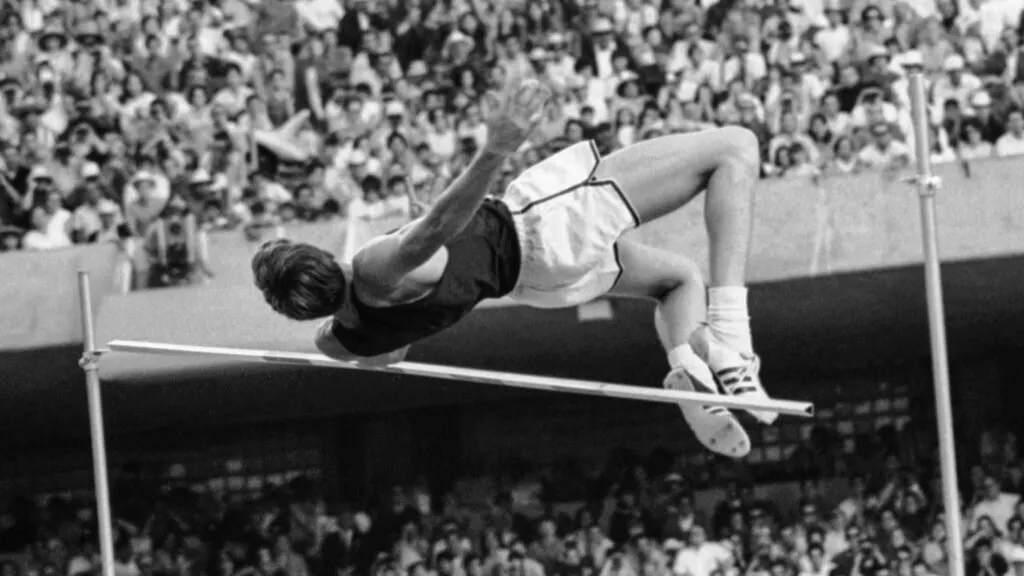Dick Fosbury: Meet the man who revolutionized high jump

The legendary athlete succumbed in his battle against lymphoma earlier this month.
Dick Fosbury is considered to be a pioneer in the history of track and field. The American athlete revolutionized the high jump event with a "back-first" technique now known as the Fosbury Flop. The high jump changed forever on October 20, 1968, during the Mexico Olympics. A 21-year-old civil engineering student attempted a Fosbury flop which was unusual to people watching the event.
The high Jump has been a part of the Olympic Games since its inception in 1896. Many athletes throughout the year have used different techniques starting with the standing jump, scissors jump, straddle, and the western roll. Each technique had advantages over the others. Fosbury in his initial days wasn't good at the high jump and was trying to succeed. He applied some mechanics and learnt that by arching his back, a jumper's centre of gravity can stay below the bar, even as the body sailed over it.
Performance at 1968 Mexico Olympics

Dick Fosbury jumped 2.24m to clinch the gold medal setting a new Olympic record in the process. Only three athletes could cross the 2.20m barrier and Fosbury was in the lead by virtue of having cleared every height on his first attempt. At the next height at 2.22m, Fosbury again cleared the bar on his first jump. His teammate, Ed Caruthers, cleared on his second effort, while Valentin of the Soviet Union missed on all three attempts and earned the bronze medal
The bar was raised to 2.24m, and Fosbury missed his first two attempts but cleared on his third, while Caruthers missed on all three of his attempts. Having won the gold medal and broken the American record, Fosbury asked the bar to be raised to 2.29 m for his final three attempts, hoping to break Valery Brumel’s five-year-old world record of 2.28m. He took three attempts at 2.29m in an attempt to break the world record but did not prevail.
Apart from the technique, sawdust, sand, and woodchip surfaces were used by jumpers in their landing (scissors technique). Later foam rubber landing pits were used, which had a softer and elevated landing surface and ultimately, Fosbury found it easy and safe during the landing.
As reported in Deccan Chronicle, Physics explains why the Flop technique is more efficient than the previous ones. In the Flop, the jumper is able to lower his centre of mass below the bar, going higher in the process. In straddle, the centre of mass is above the bar along with the body of the jumper. Fosbury said he wasn’t influenced by science. “I perfected the Flop by trial and error. Above all, I developed it out of frustration as I was the poorest jumper in my peer group. I primarily used it not to lose,” he added.
Growth of Fosbury Flop

Other athletes had also been experimenting with backward head-first techniques, including Canada’s Debbie Brill, but Fosbury's style really captured attention in Mexico City and not everybody liked the idea at first. In the 1972 Olympics, Juri Tarnak used the straddle technique to win the gold medal but as time passed by, all the athletes started adopting the Flop. Of the 36 Olympic medalists in the event from 1972 through 2000, 34 used "the Flop", making it the most popular technique in high jumping.
Fosbury did not compete in the Olympics since 1968, although having age by his side. The legendary athlete died on March 12, 2023, aged 76, with a recurrence of lymphoma.
"There are many great champions in our sport but few leave a legacy like Dick Fosbury, who transformed the high jump with his revolutionary technique," said World Athletics President Sebastian Coe. "He was passionate about track and field throughout his life and gave much to our sport beyond his innovative mindset, which famously won him Olympic gold in Mexico in 1968. His name will live on as the inventor of the Fosbury Flop. You will be missed, Dick. My deepest condolences to his family and friends," he added reporting on the World Athletics website.
Where passion meets insight — blending breaking news, in-depth strategic analysis, viral moments, and jaw-dropping plays into powerful sports content designed to entertain, inform, and keep you connected to your favorite teams and athletes. Expect daily updates, expert commentary and coverage that never leaves a fan behind.
- Top five longest throws in men’s javelin in 2025 season
- Neeraj Chopra meets PM Narendra Modi at his residence
- Arshad Nadeem wins javelin gold at Pakistan National Games 2025
- World Athletics Awards 2025: Mondo Duplantis, Sydney McLaughlin-Levrone named Athletes of the Year
- Arshad Nadeem coach Salman Iqbal Butt's lifetime ban overturned by Pakistan Sports Board
- South Asian Athletics Championships 2025: Live streaming, TV channel, where & how to watch?
- South Asian Athletics Championships 2025: Schedule, fixtures, Indian contingent, live streaming details
- India's best moments at World Athletics Championships 2025
- Neeraj Chopra vs Arshad Nadeem head-to-head: Who holds the superior H2H in men’s javelin throw?
- Who holds the record for longest javelin throw, and where does Neeraj Chopra stand in the list?